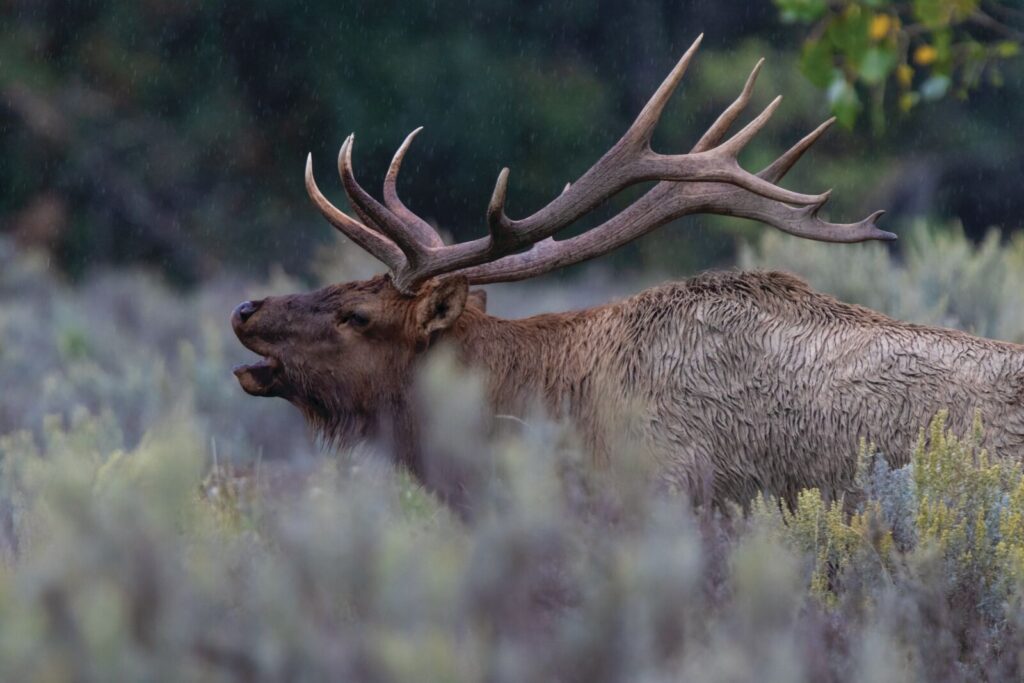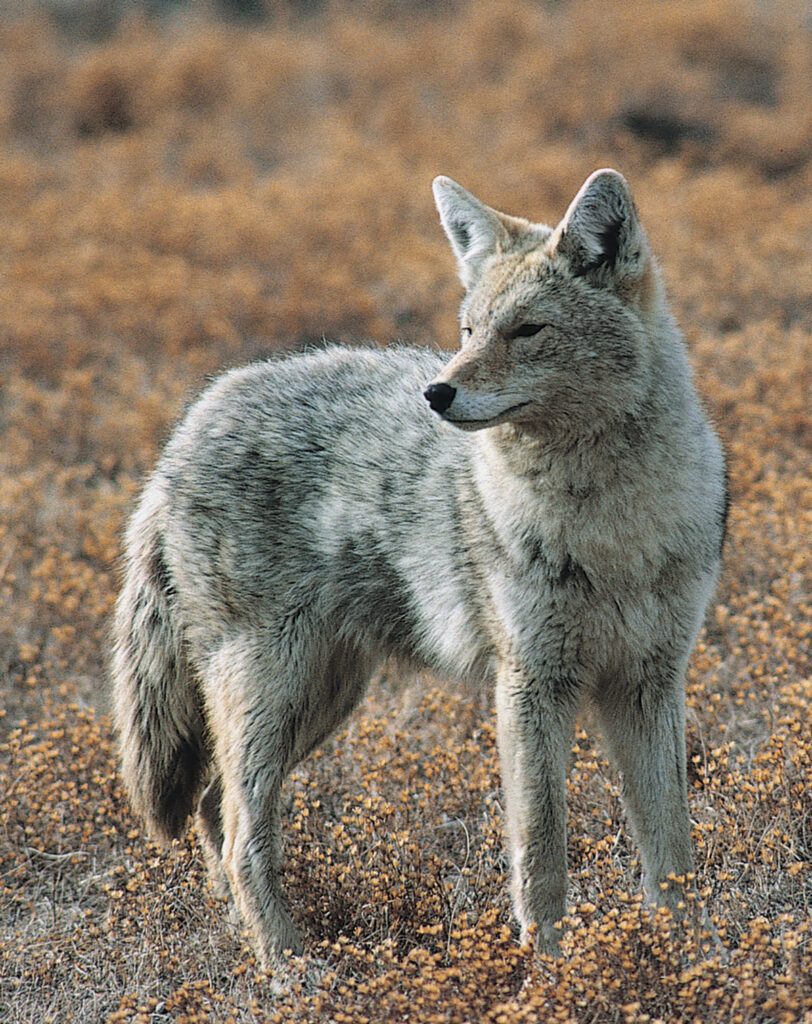The Valley is a diverse and beautiful place, and that’s not just unique to the people. The animals of Fargo-Moorhead are just as interesting as the rest of us who live here! To learn more about the creatures and critters here, we chatted with Outreach Biologist Doug Leier and found out just how interesting our furry neighbors are.
Moose

Did you know?
Moose are very large and only have a few natural predators outside of wolves, so it makes sense when Doug says, “They go where they want to go, when they want to go, and if they want to go.”
Know your Moose! There are a few different types of moose. Those who frequent our landscape are Northwestern Moose, which, according to Britannica.com, inhabit central Canada, North Dakota, Minnesota, and northern Michigan
Did you know?
In the U.S., we have areas home to both moose and elk; but in Europe, it is common to call them the inverse. So, if you travel to Europe and see an elk, locals will refer to it as a moose!
While uncommon in the Red River Valley, moose have made an appearance here!
Doug also argues that moose is one of the tastiest wildlife in the Red River Valley!
Meet Outreach Biologist at North Dakota Game and Fish, Doug Leier!

Doug is a North Dakota native— born in Williston, raised in LaMoure, and a graduate of Valley City high school. He attended NDSU Bottineau and NDSU Fargo and began his career as a game warden. He currently lives in West Fargo with his wife and their three children. Doug works as a biologist for North Dakota Game and Fish. When asked “Why Fargo?” Doug says this, “North Dakota is the Fort Knox of the outdoors—pure #gold.” So, there’s not much else to say!
Elk

Did you know?
Elk are also called wapiti, an indigenous name from the Shawnee Tribe meaning white deer (referring to their white coat on parts of the body)!
The average bull (male Elk) is 59 inches at the shoulder and averages 700 pounds (range 470- 1,100 pounds). Cows (female Elk) average 500 pounds (range 440-600 pounds) and average 53 inches!
These animals are not uncommon visitors to the Red River Valley, they do wander through the area. “There are sustained populations in northwestern Minnesota up in the Lancaster area,” Doug said. “In the Southern Red River Valley, I probably get a sighting about once or twice a year.”
Black Bear

There is no known breeding population of bears in North Dakota, but in 2020, the North Dakota Game and Fish reported that they confirm 12-15 black bears in the state each year!
This black bear was spotted near Fargo! While more commonly found in Minnesota, the black bear is more frequent in the Red River Valley than some of the other wildlife. On the North Dakota side of the Red River Valley, they travel in from Minnesota and can travel down from Canada. You can find black bears in the Pembina Gorge State Recreation Area near the Canadian border as well.
“Unfortunately, one of the problems with bears in the rural areas and even in the urban areas is that if you have unsecured garbage or feed pets outside, you can attract black bears, as well as coyotes, raccoons, and other critters,” Doug said.
While this is not something you’d expect in the FM cities area, Doug likes to say, “Never say never!”
Mountain Lion

Did you know?
When you see animal pawprints in the snow, they might be larger than what the actual paw is. This is due to the sunlight applying heat to the track, expanding the edges so it looks bigger than it actually is!
“We do not know of a documented breeding mountain lion, a female mountain lion with kittens—but just because we don’t know, it doesn’t mean they haven’t been here,” Doug said.
While they really do just look like big cats, they have a long tail that almost reaches the same length of their body!
When Doug gets a call about a mountain lion, he always checks the tracks. Often times he finds these tracks are huge, but because a mountain lion is a feline—those giant tracks might not actually belong to them. Cats (even these big ones), have their claws retracted when they walk. So, unless they are using them at the time of walking, the extra length from their claws won’t show in their tracks. Doug says those tracks usually belong to a dog or coyote.
When the Valley does get mountain lion visitors, they are mostly coming from the Badlands on the western side of the state or possibly the Black Hills of South Dakota.
"I think the outdoors, the fish and wildlife of the Red River Valley, takes second place to nobody."
Pronghorn Antelope
Check it out!
Hunters refer to the pronghorn antelope as speed goats. They’re the fastest land mammal in North America with speeds up to 55 miles an hour!
An uncommon visitor to the edge of the Red River Valley is the pronghorn antelope.
Doug says that there are reports of pronghorn from the central Red River Valley in Trail County (Mayville-Hillsboro, ND area) to the edge, in the Finley, ND area of Steele County, and also at times on the edge of the Coteau des Prairies near Sargent County—but they have been in the Red River Valley.
“While they’re uncommon, when they are here, it is really cool to have the fastest land mammal in North America here,” he said.
Otter

Did you know?
Otters are part of the “weasel” family. The total body length of an adult otter ranges from 35-54 inches, and according to ND Game and Fish, their long tails account for 35- 40% of that!
You don’t have to venture to the Red River Zoo to see an otter in action! While they were uncommon in the past, Doug says that otters are becoming more common on the Red River, as well as on some of the tributaries like the Sheyenne River.
“And yes, at times, you can see reports from within the city limits even in Fargo on the Red River… they are really fascinating,” he said. “They’re just as fascinating of a creature for me as a biologist as they are for humans just to watch. People stand for hours at a zoo and watch an otter and if they see an otter in the wild—it is absolutely just fascinating.”
Coyote

Did you know?
Coyotes are nocturnal animals, meaning they are most active at night!
Coyotes are abundant throughout the state of North Dakota, but according to the ND Game and Fish—it wasn’t always like that. In the mid-1900s, the animal was nearly absent from the landscape due to the “widespread use of poisons and aerial hunting.” But since the number of coyotes has grown once again to be “one of the most abundant and commonly harvested furbearer in North Dakota.”
Coyotes are so common in the Red River Valley that they can actually be found in urban centers.
“Not just Fargo, [coyotes] are found in places like Chicago,” Doug said. “Coyotes do provide a service because they help with urban rodent problems like rats. Most of the time, they’re doing their hunting at night, and they become acclimated and accustomed to urbanists, just like a lot of the other wildlife.”
Turkey

Did you know?
Turkeys “roost,” or sleep, in trees!
In the wintertime, turkeys will find spots that are out of the cold and near a source of food. So, people who feed birds year-round might find that they have a much larger bird to feed as well!
A common wildlife spotting, as well as complaint call, is turkeys. Doug said that the problem with turkeys is that some locals love to see them, and other neighbors don’t.
“One of the funny stories of a turkey I have was when a gentleman had a problem with turkeys. They were up on the patio and they were pecking the sliding glass window on the patio. I said what they might be seeing is their reflection. They may be a little bit territorial when they see their reflection and they see another turkey. I said, ‘If you close the blinds that might help,’ and he said, ‘Well, then I won’t be able to see the turkeys.’ And that’s an example of the challenges that we have in helping people deal with urban wildlife issues.”
Hungarian Partidge

Did you know?
According to allaboutbirds.com, Hungarian Partridge hens can lay up to 22 eggs— among the most of any bird species!
Nonhunters may see the large gray bird and think it resembles a pigeon, donning a similar puffed-out chest and round head. But this game bird is known by local hunters, also called the gray partridge or “huns.”
A newly common animal in the metro area is the Hungarian partridge, with a population that has been growing in the state, in urban areas, and especially in Fargo. Doug said that they are found in open grass spaces, park areas, and in undeveloped grassland areas.
Prairie Chicken

Did you know?
An upland game bird is a bird that is hunted in upland hunting—a form of hunting where the hunter targets birds like quail, pheasant, grouse, prairie chicken, Hungarian partridge, and others alike!
Found just north of Fargo-Moorhead in Grand Forks County, the Prarie Chicken is a very rare upland game bird. Prarie chickens are also found in Clay County in Minnesota.
Doug said the bird dates back to Lewis and Clark.
“That’s what’s cool about it—if you read through the journals of Lewis and Clark, you hear about the prairie chicken. Sometimes they may be referencing the sharptail grouse but oftentimes, they’re referring to the prairie chicken.”
They’re a huge gamebird, and very beautiful in the springtime when you can see them dancing in their spring meeting, dancing on their grounds.



